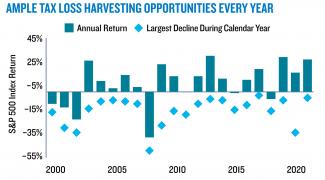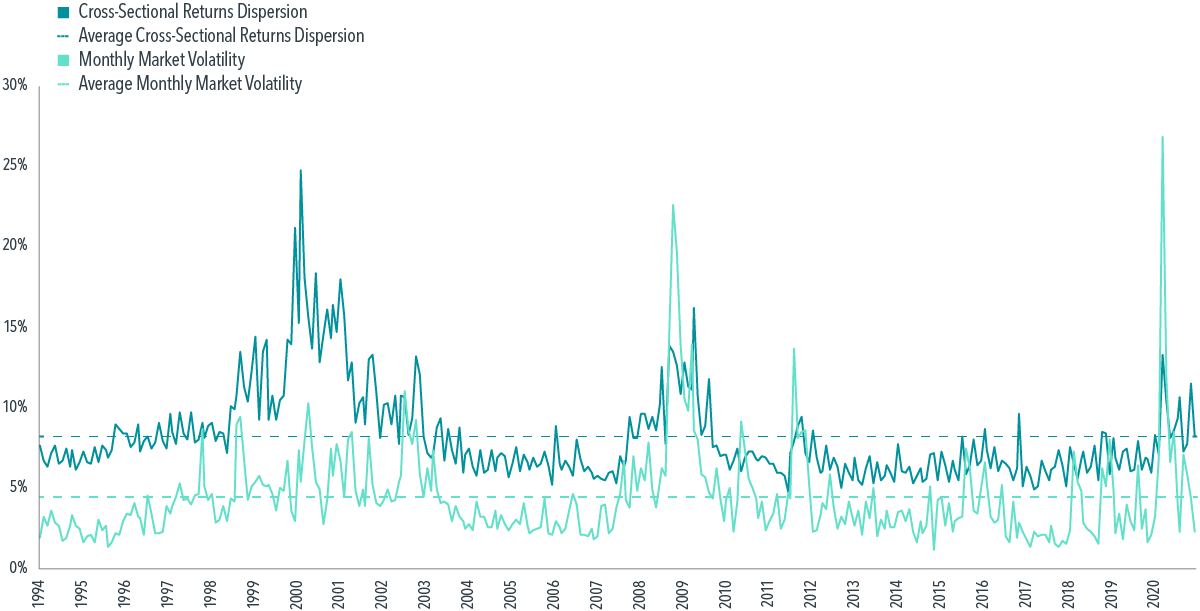tax loss harvesting canada
Automatic rebalancing You dont have to watch your portfolio like a hawk. Tax-loss harvesting should be done with due care and in a legal way.
Using Market Volatility To Reduce Taxes A Case Study In Tax Loss Harvesting O Shaughnessy Asset Management
Tax loss harvesting also known as tax loss selling is the practice of selling shares or units held in a non-registered account that have dropped in value to the point that a capital loss can be claimed eg.

. A tax-loss sale cannot occur before December 31 so you must settle the sale before thenThe typical settlement deadline is usually one to three business days. You have until two trading days before the end of the year to sell assets to qualify for tax-loss harvesting however it is recommended that investors do this quarterly. The capital loss can be used to offset capital gains either in the current year or in the previous three tax years or they can be carried forward to any future year.
You must first apply the loss against the capital gains in the. How Much Can You Save with Tax-Loss Harvesting. Dec 14 2020 Tax-loss harvesting occurs when you sell an investment that has dropped below its original purchase price triggering a capital loss.
It involves selling your poorly performing investments at a loss and then using those losses to offset realized taxable gains on other investments. If you sold at a loss on or before that date. The amount of money that you can save with tax loss harvesting in Canada depends on your tax bracket.
Tax-loss harvesting is the timely selling of securities at a loss in order to offset the amount of capital gains tax due on the sale of other securities at a profit. So Wednesday December 20 is also another typical dayCanadians and Americans will mark their last day of life on this dayGet cracking on stocks now. Unlike stocks however cryptocurrencies have unique characteristics that make them even better candidates for tax-loss harvesting.
At its most basic tax-loss harvesting involves intentionally selling poorly performing investments for a loss and reinvesting the proceeds back into the market. Getting started with tax-loss harvesting. There are however tax-loss harvesting strategies that allow you to maintain exposure to a particular stock or sector while still realizing a capital loss.
However in general you can expect to save around 30 of the amount of the loss. To be clear there is no benefit to tax-loss selling in your TFSA or RRSP. So if you lose 1000 on investment you could save around 300 on your taxes.
Just like stocks cryptocurrencies can be used for tax-loss harvesting. Here are a few important points to remember. Tax-loss harvesting or tax-loss selling is a tax strategy by which you intentionally sell an investment for a loss in order to offset capital gains taxes elsewhere.
Tax-loss selling or tax-loss harvesting occurs when you deliberately sell a security at a loss in order to offset capital gains in Canada. Mar 19 2020 Tax loss harvesting tends to happen near the end of the year although there is no specific requirement. Tax loss harvesting is an investing strategy that can turn a portion of your investment losses into tax offsets helping turn financial losses into wins.
You can then use these losses to offset your taxable capital gains. Only brokerage accounts for tax-deductible accounts such as 401ks IRAs and other tax. As you may know tax-loss harvesting is a strategy designed to help you lower your tax burden.
But you have to follow the rules or you could find yourself on the wrong side of. The concept behind tax loss harvesting entails that future capital gains can be taxed lower or in part because of capital losses incurred in the present. The strategy offers a silver lining allowing investors to make use of losses by partially diminishing or negating taxes owed on gains realized.
You need 50000 to get tax loss harvesting A main benefit of robo-advisors is their tax-loss harvesting abilities. Tax loss harvesting is where money is lost or gained through tax deductions. Harvesting losses as they occur may help to.
With Charles Schwab Intelligent Portfolios you only get this service if you have at least 50000 invested. Tax loss harvesting is an additional method of tax management in regards to investment planning. Tax-loss selling also known as tax-loss harvesting can be an effective way to lower your tax hit.
Tax loss harvesting is an additional method of tax management in regards to investment planning. These investments can be sold and the subsequent capital loss can be used to offset any capital gains incurred that tax year. What Is Tax-Loss Harvesting.
However capital losses can be applied against capital gains to reduce the gain amount in order to lower the taxes owed. In Canada 50 of capital gains are taxable. Investors can harvest tax losses by selling their investments for a loss to avoid paying capital gains taxes.
Lets go through some of these. Going back to our example after the investor sells their bank shares at a loss they could then purchase a Canadian bank stock ETF or a Canadian equity mutual fund with a large exposure to the Financials sector. In Canada the last day in 2021 for tax-loss selling on the Toronto Stock Exchange was December 29 2021.
Tax-loss selling also known as tax-loss harvesting is a technique for realizing or crystallizing capital losses in your non-registered accounts so they can be used to offset taxable capital gains. Tax-loss selling also known as tax-loss harvesting is a strategy available to investors who have investments that are trading below their original cost in non-registered accounts. These investments could be stocks bonds.
An overview of tax-loss harvesting. This means that you can also strategically selltrade crypto to harvest losses and reduce your tax liability. This entire conversation only applies to your non-registered accounts where deferring capital gains.
Tax-loss harvesting with cryptocurrencies. Tax-loss selling also known as tax-loss harvesting is a strategy used to reduce taxes on capital gains incurred from the sale of an asset. Tax-loss harvesting is a practice that takes advantage of the rules that let you use capital losses to offset other forms of taxable income.
Tax loss harvesting is a method of reducing your taxes on capital gains realized from the sale of certain investments.

Turning Losses Into Tax Advantages

Tax Loss Harvesting At Work A Wealthsimple Case Study Boomer Echo

Volatile Markets Raise Tax Loss Harvesting Opportunities
Using Market Volatility To Reduce Taxes A Case Study In Tax Loss Harvesting O Shaughnessy Asset Management

What Is Tax Loss Harvesting Ticker Tape

Time For Capital Gains Harvesting From Your Corporation Physician Finance Canada

What Is Tax Loss Harvesting Ticker Tape
Using Market Volatility To Reduce Taxes A Case Study In Tax Loss Harvesting O Shaughnessy Asset Management

Using Exchange Traded Funds In Tax Loss Planning

Smas At Work A Smarter Approach To Tax Loss Harvesting Dimensional Fund Advisors

I Get Free Tax Loss Harvesting Awesome Wait What Is That Wealthsimple
Using Market Volatility To Reduce Taxes A Case Study In Tax Loss Harvesting O Shaughnessy Asset Management

Tax Loss Harvesting Using Losses To Enhance After Tax Returns Bny Mellon Wealth Management

Tax Loss Harvesting Using Losses To Enhance After Tax Returns Bny Mellon Wealth Management

Turning Losses Into Tax Advantages

Tax Loss Harvesting Using Losses To Enhance After Tax Returns Bny Mellon Wealth Management

